This page contains affiliate links. Please read our disclosure for more info.
I felt like a character in a Jane Austen novel as I sat high up on the carriage next to the driver. The twin white lipizzaners led us at a surprisingly smooth, comfortable pace on tree lined avenues through the stud farm’s extensive pastures past mares and foals frolicking in the fields.
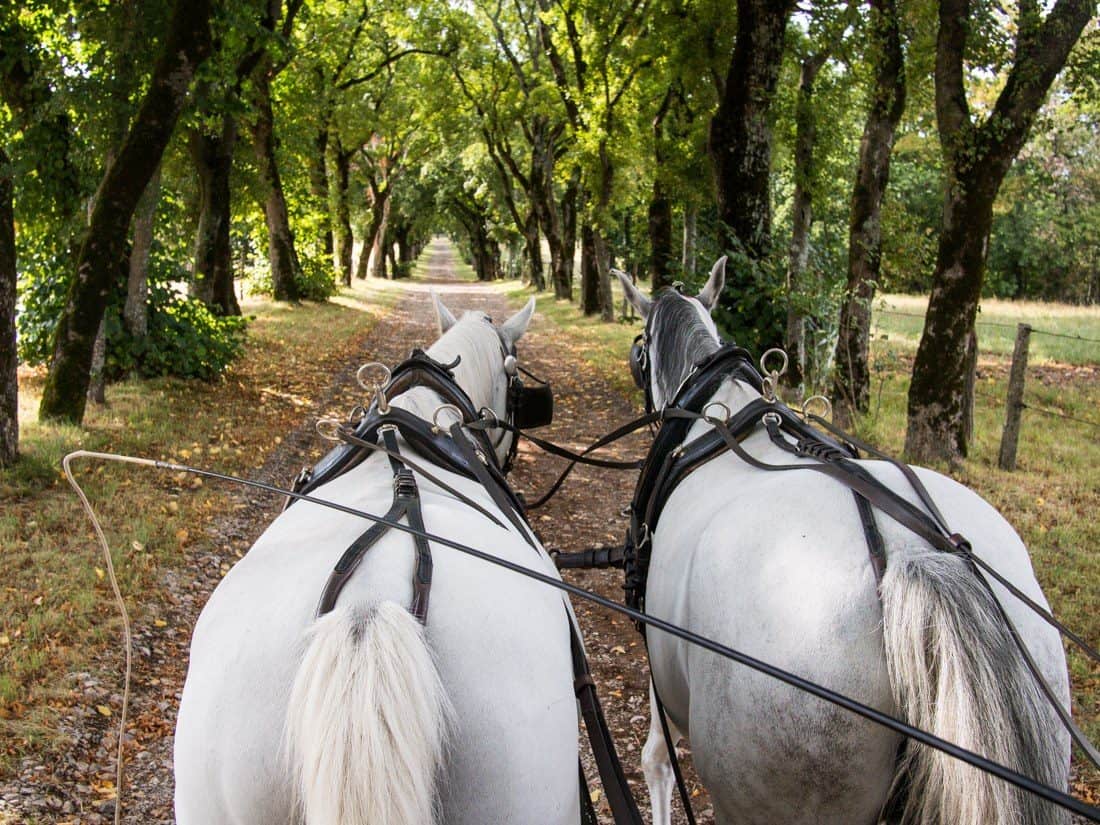
There’s something comforting about being around horses, for me at least. It might be that their sweet smell takes me back to my childhood of riding lessons and working in stables, or just the calm dignity of these beautiful creatures. The lipizzaners we visited at the Lipica Stud Farm are particularly special.
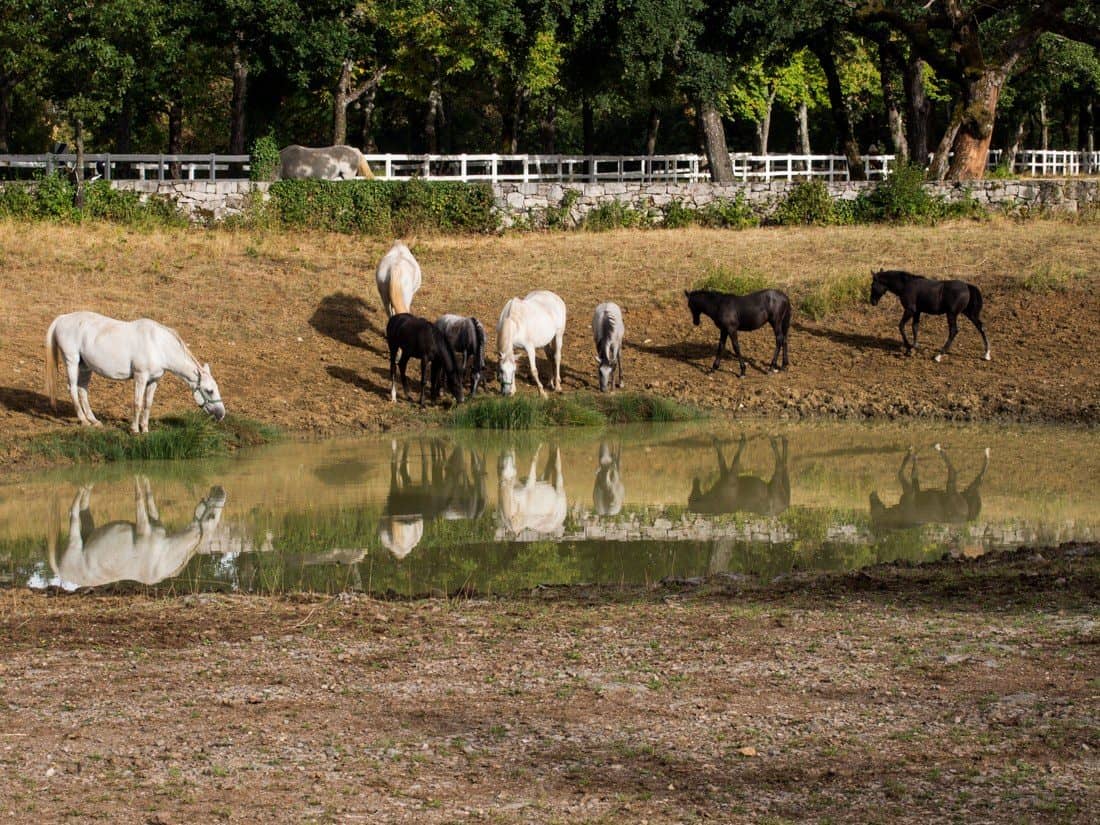
Lipica is the oldest stud farm in Europe dating back to 1580 and it has been breeding horses ever since. The horses of the Karst region, a pocket of southern Slovenia close to the Italian border (you can see Italy from Lipica) were known for their strength, persistence, and long lives, and the Habsburg Archduke Charles II bought the Lipica estate to breed quality horses for military purposes. The Karst horses were crossbred with Spanish, Italian and Arabian horses and two hundred years later the Lippizaner breed was formed. Although originally used for the military the lipizzaners were so intelligent and responsive, with a high graceful step, that they began to be used for the high school dressage that they became famous for. They are now mainly used for carriage riding and dressage, including impressive jumps known as “airs above the ground”.
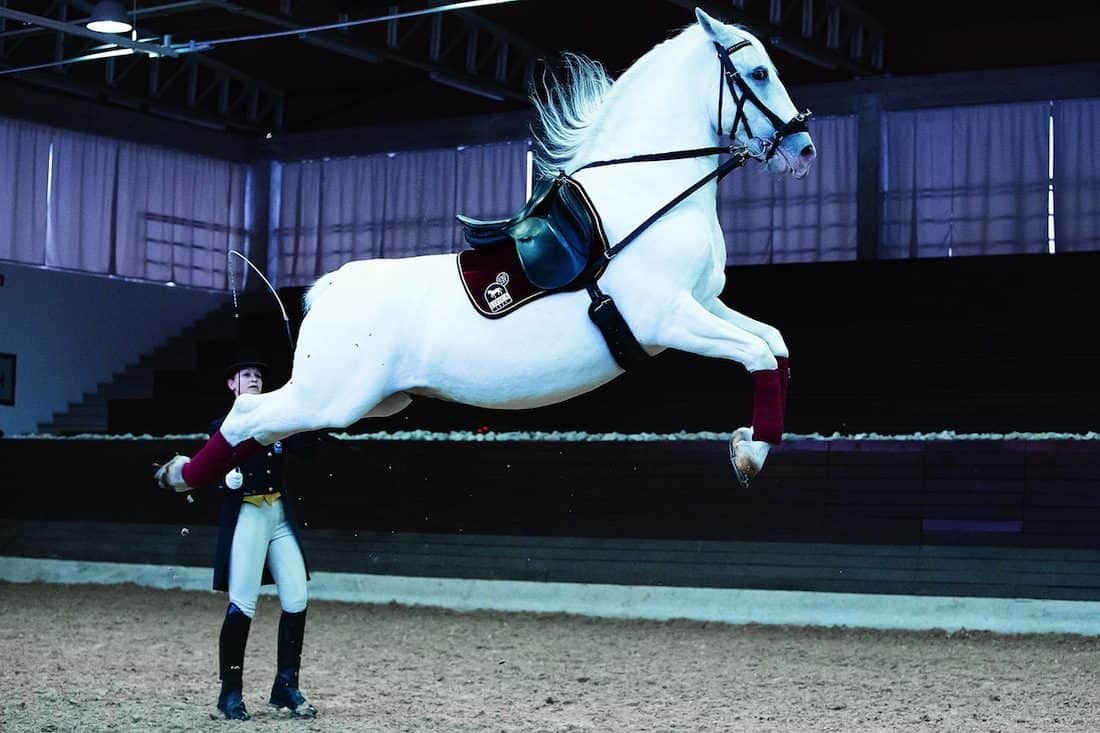
There are 350 horses at Lipica which is owned by the state and protected as a cultural monument of outstanding importance. The stud farm welcomes visitors and although sadly we didn’t visit on a performance day to see the horses in action, we did enjoy a guided tour of the stables and taking a carriage ride around the grounds.
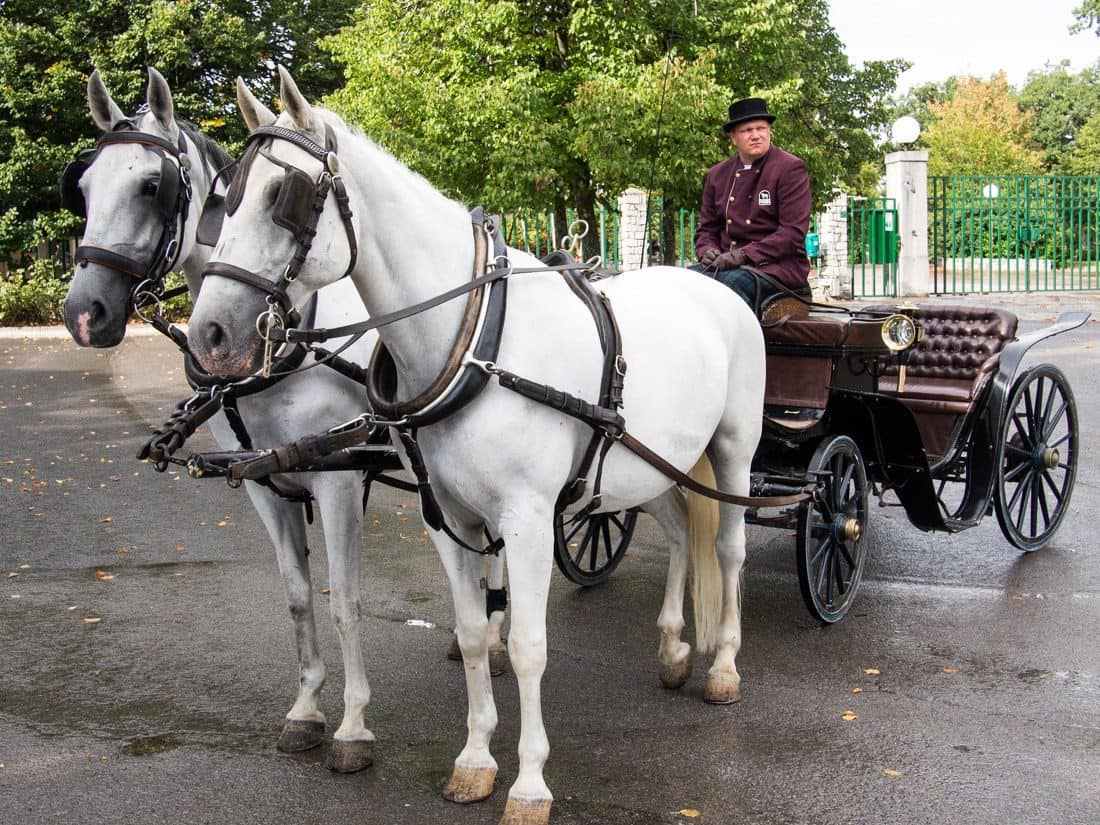
We started with the stallions in the oldest stable building built in 1703. With an arched ceiling and spacious boxes its an appropriate home for the dignified creatures.
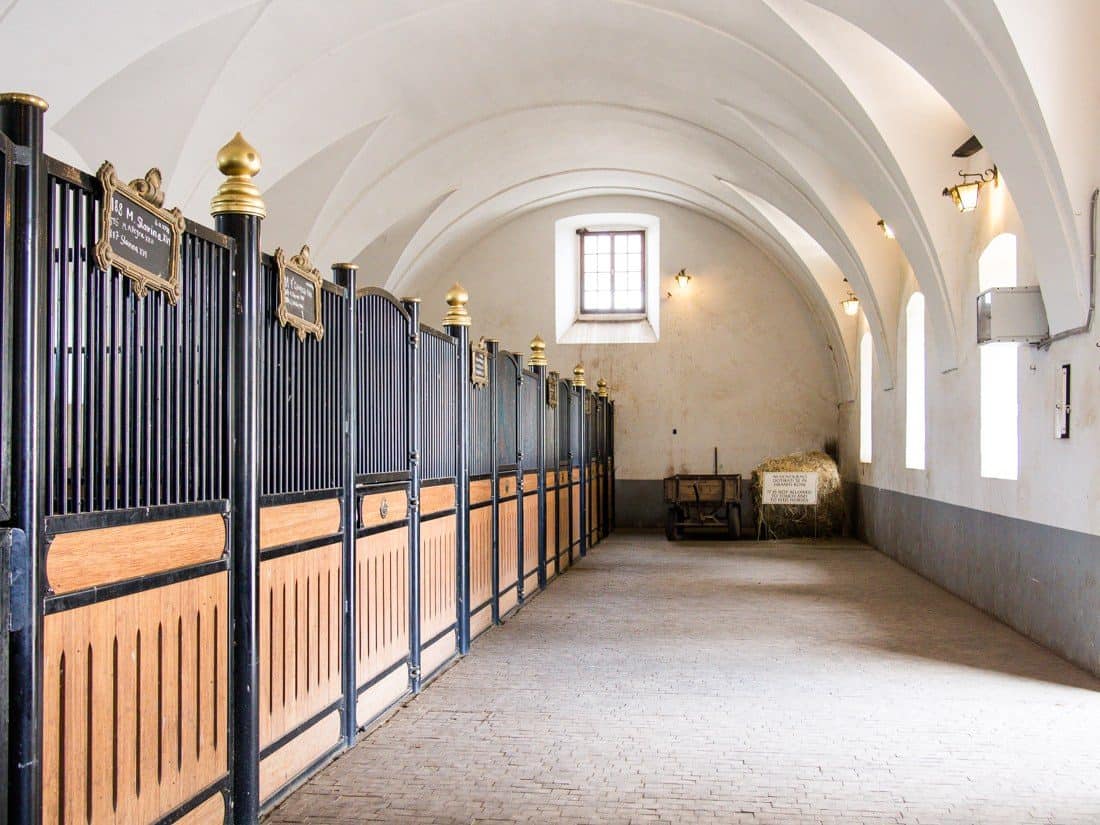
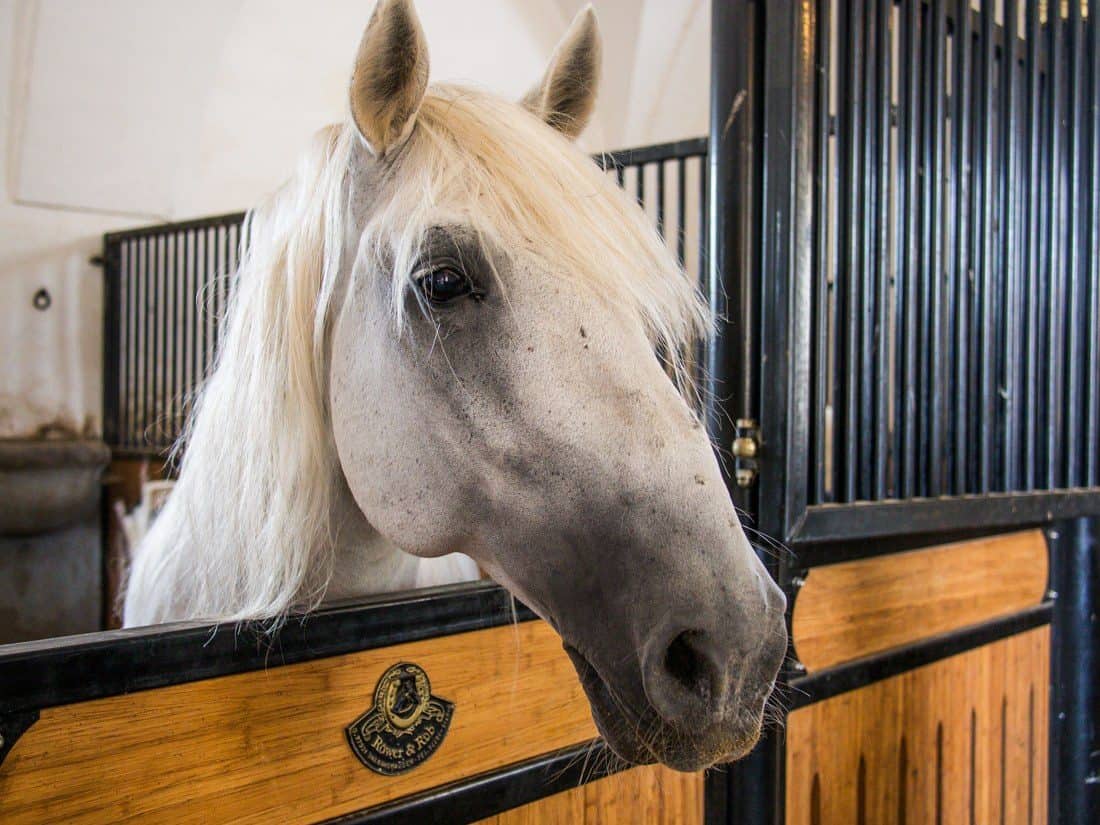
We met Napolitano Monteaura XIX, a beautiful horse with the lipizzaner’s distinctive grey-white coat, a flowing mane, and expressive eyes. He’s of medium height, quite stocky and strong, and very friendly. The stallions I’ve been around in the past have been feisty animals who won’t let you near them, but Napolitano was very gentle. He takes his name from his father’s first name plus his mother’s name and her number. Mares get the same name as their mother with the number plus one. It’s all part of the incredible tradition of the stud farm—the heritage line of the fathers dates back to the 1700s, and is one of six lines of stallions.
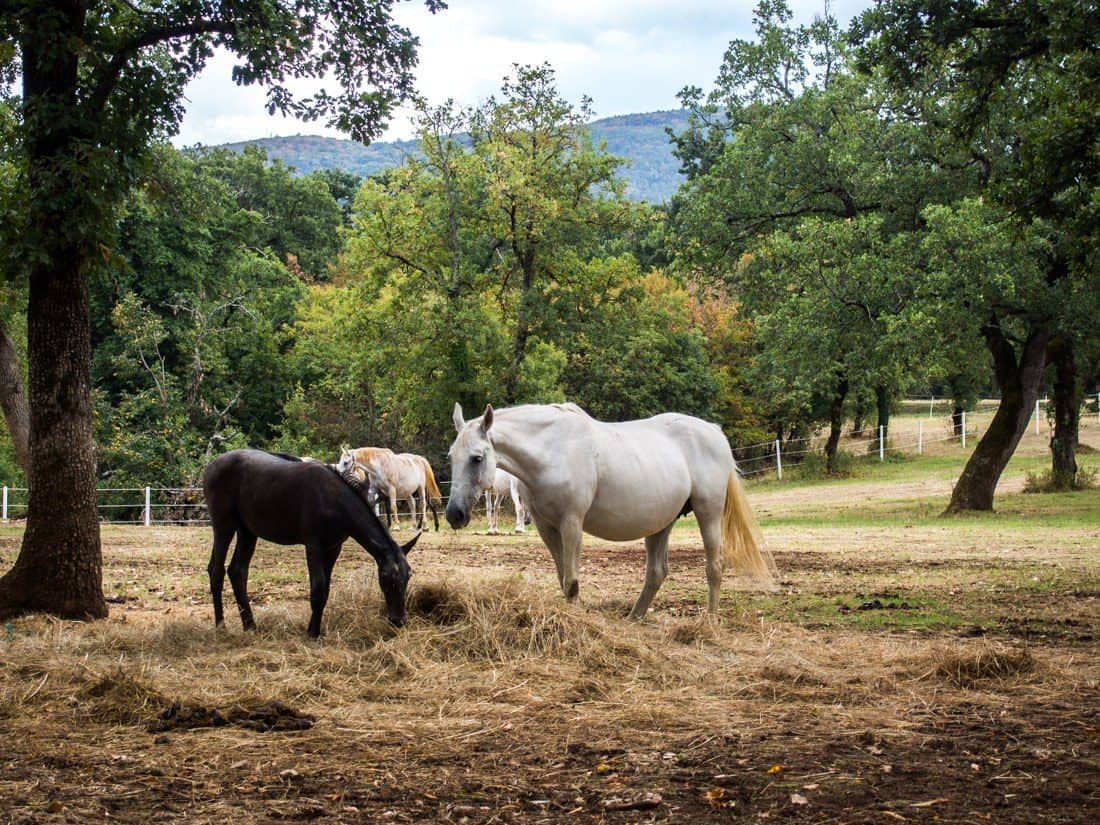
The mares are kept out in the extensive pastures during the day. Lipizzaner horses are born dark and get lighter each time they lose their coat. You can see the transition from the young black foals to the older light brown youths until they become the famous snowy white.
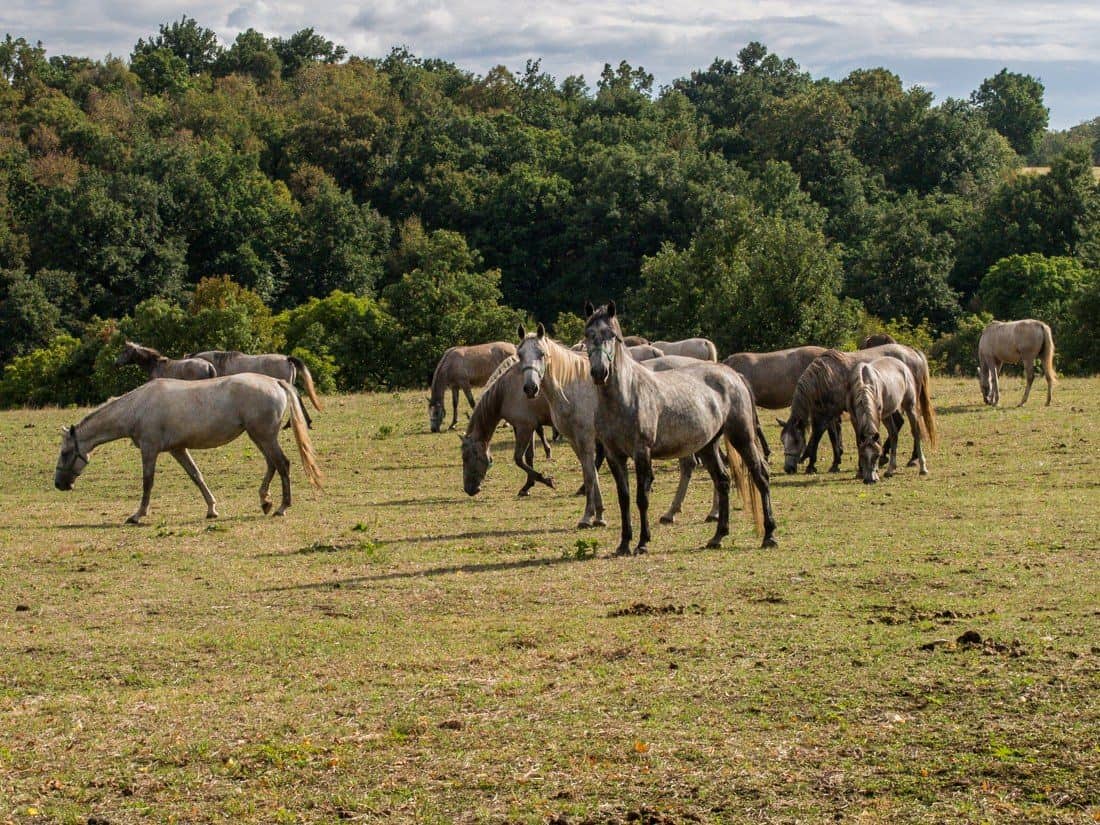
Out in the fields we got to meet the mares and their playful foals who are warm and bright-eyed, coming up to the fence, friendly and curious, keen for attention and strokes.
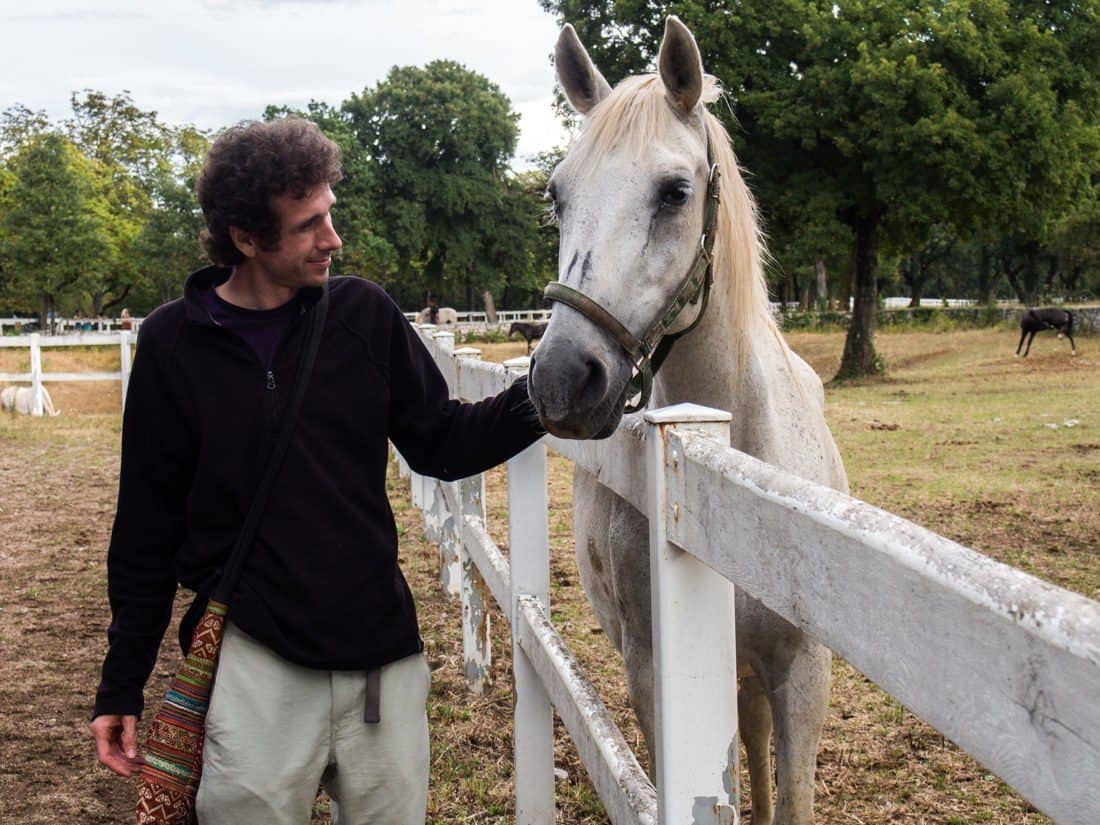
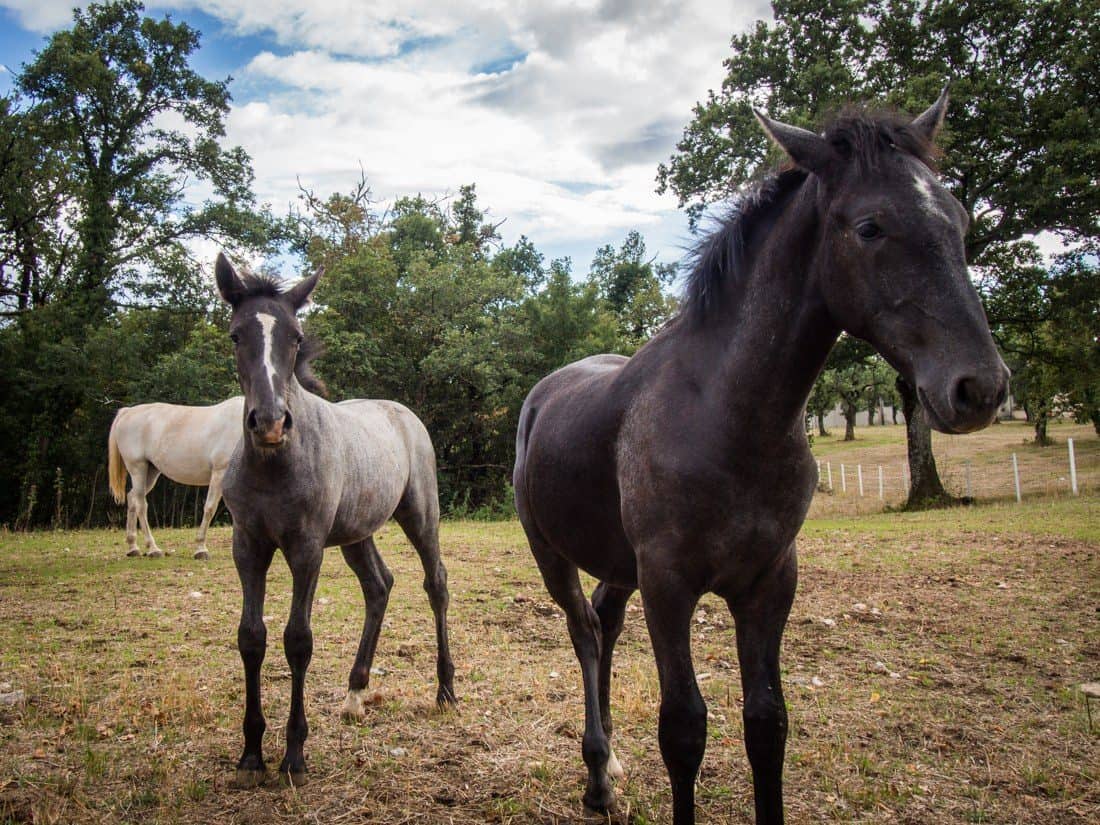
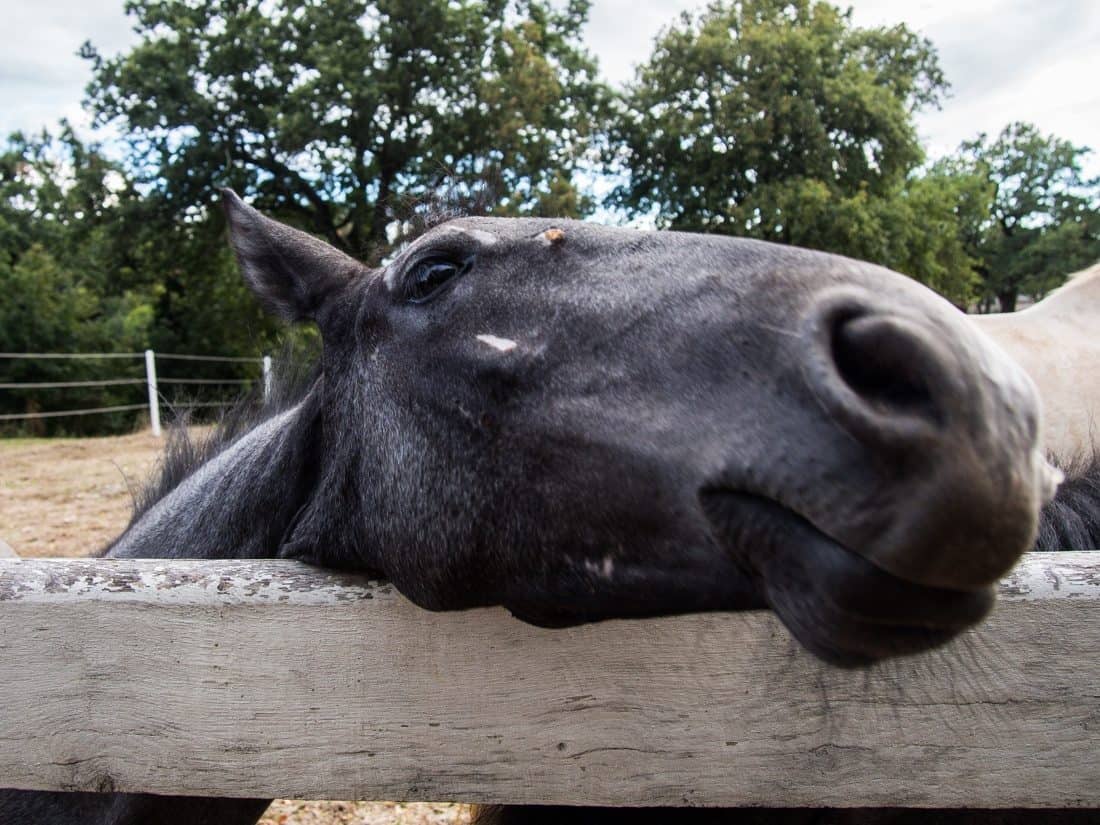
Horses need company and it was fascinating to watch the herd dynamics especially the dark foals, only 3-5 months old, who charge around the field, playing and fighting, but also taking the time to scratch each other’s backs.
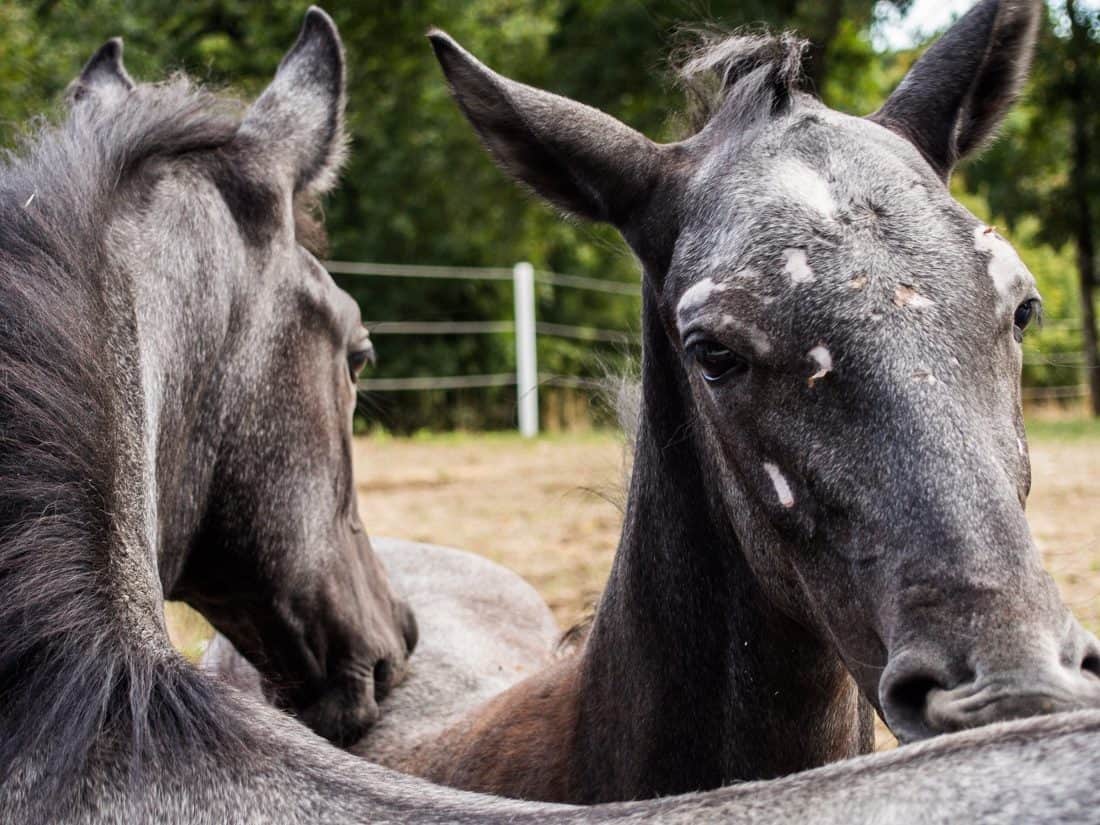
At the end of the day we watched the herds being brought back to the large open stables where they spend the night. They know the drill so are waiting at the gate at the right time. A staff member dressed in army fatigues leads them down the tree lined avenues, without any lead ropes, directing them with whistles and gentle calls. It’s quite a sight, a controlled stampede of dozens of horses coming towards us.
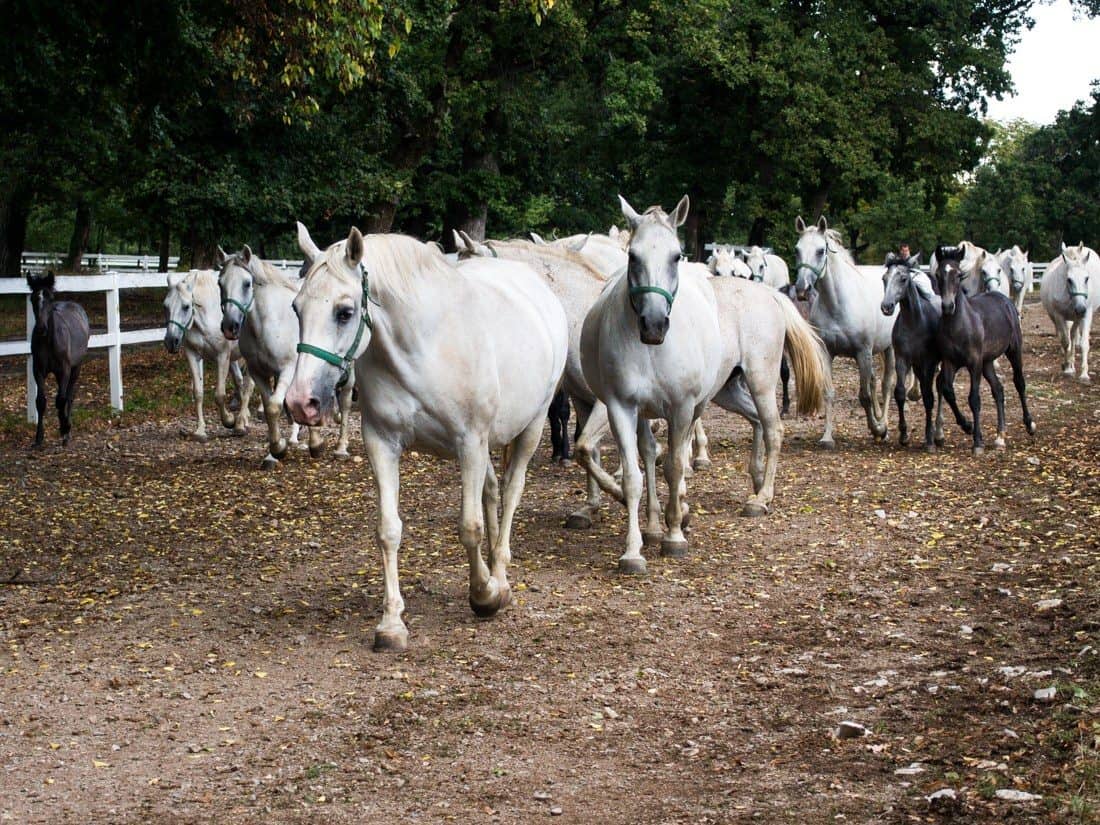
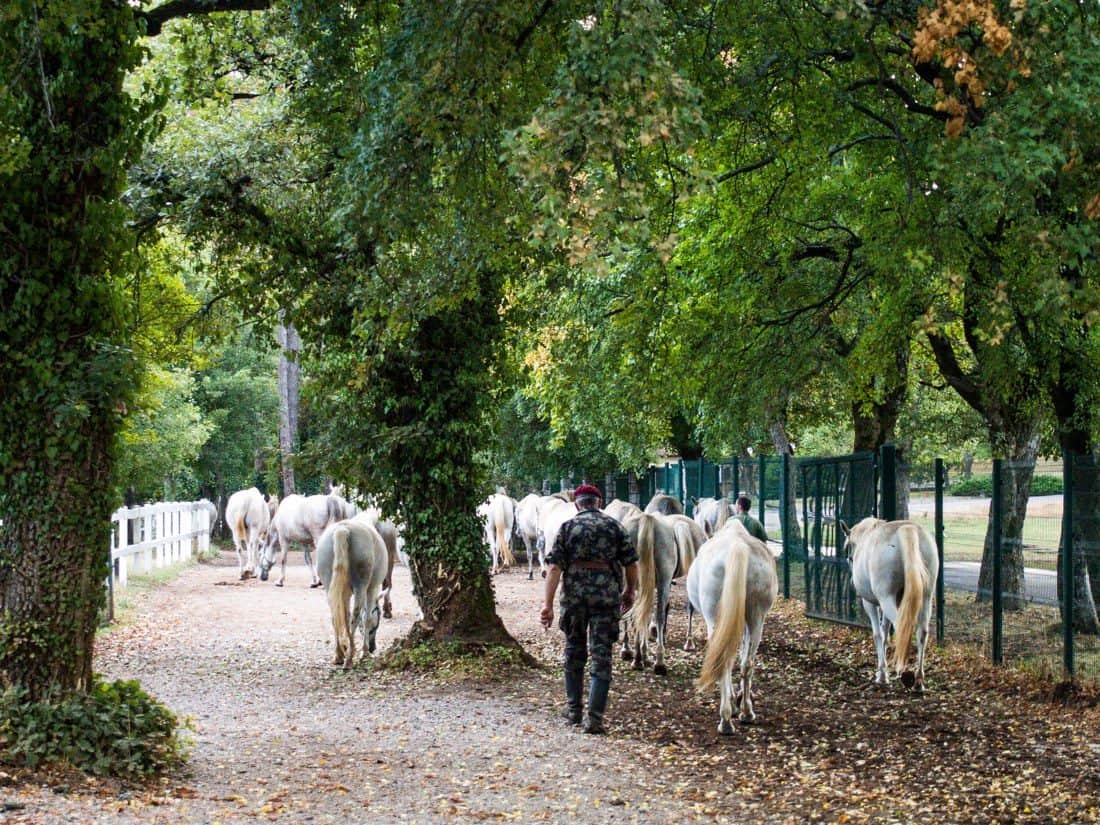
There’s a small interesting museum on site with information about the horses and the dramatic history of the farm including the many war evacuations the horses have undergone due to its precarious location between Italy and the Austro-Hungarian Empire. You can see from old photos and maps how little the farm has changed in centuries.
If you love horses like we do then Lipica is well worth a half day visit while you are in Slovenia. We rented a car for two days from Ljubljana to combine a visit to Lipica with the Škocjan Caves and the Vipava wine region. It’s only an hour from the capital so can be visited on a day trip either by car, on a tour, or by train to Sežana or Divača and then a taxi. There is a hotel on site and if you are an experienced rider you can come and stay for a week-long riding holiday.
Tours of the Lipica Stud Farm are €12 and you can see the schedule here. We’d recommend timing your visit to see one of the afternoon dressage performances.
Thanks to Spirit Slovenia, the country’s tourist board for arranging our visit to Lipica.
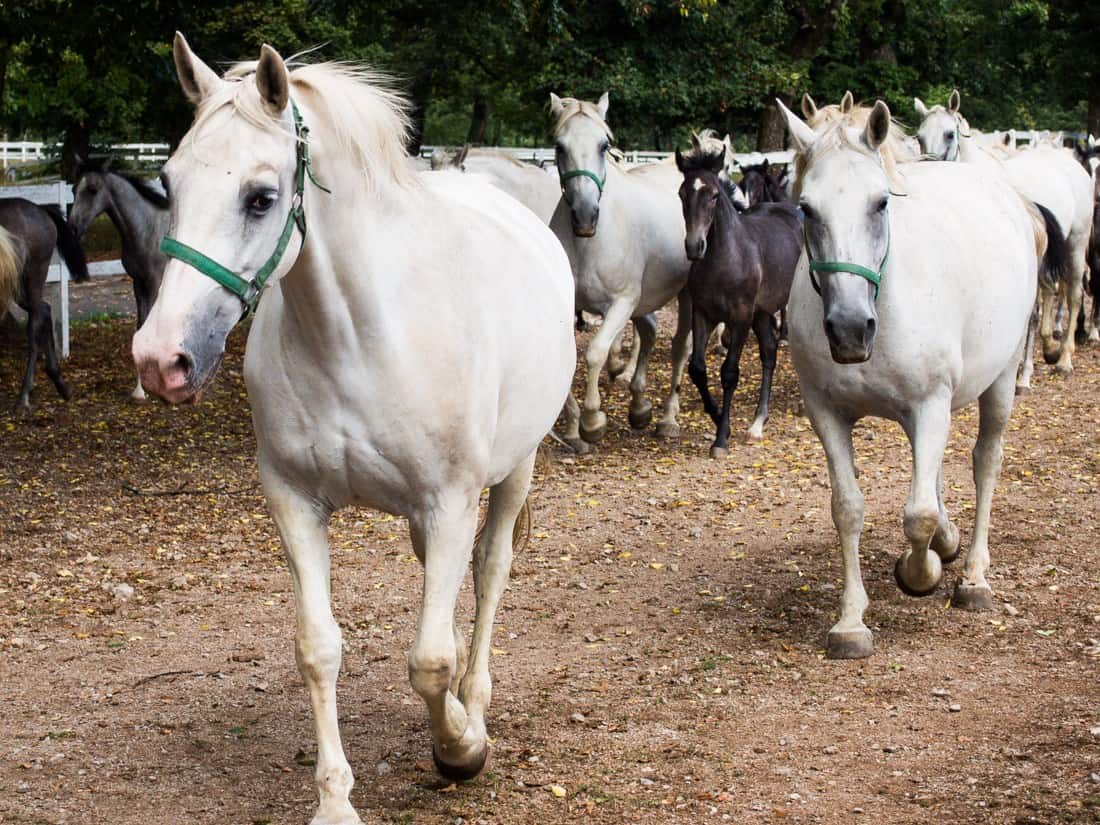
We are travelling to Slovenia late September 2014 and will definitely be visiting the Lipizzaner farm. My question is: do you ever let people ride the horses? I have been riding for 40 plus years and would consider that to be the ultimate tour of any trip ever taken.
Have a look at their website. I think it’s possible but only for people who stay there.
Hello,
This is Seong Hwan Jeong in Republic of Korea.
I’m editor of horse magazine in Korea.
I’m very interesting about Lipizzaner. I want publish related story of Lipizzaner.
Please, give me your information.
Best regards
Sunny Jeong
What a beautiful article! I am a horse lover too and always make time to find them on my travels. I’ll make sure to check out Lipica when we travel through Slovenia. :)